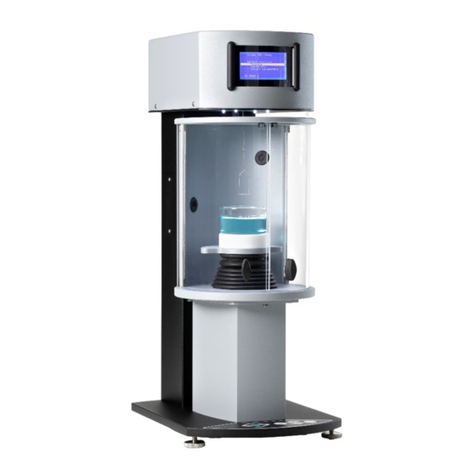
[ Attension | KSV NIMA |Q-Sense |Sophion ]
6
2.3 Connecting cables
Theta requires a computer with one free USB port, and either a Gigabit Ethernet port or a FireWire port depending on your
camera type. If the computer does not have a FireWire port available then the FireWire PCI card supplied should be installed
Connect the Theta's USB1 port to the computer USB port using the supplied USB cable. Connect the Theta’s Ethernet port to
your computer’s Gigabit Ethernet port or the Theta’s FW1 port to your computer FireWire port using the supplied cables.
Connect the power cable to the three-pin IEC connector beneath the power switch and plug in to the mains power supply.
2.4 Firewire connectivity information
On-board Firewire ports such as those connected to the front-panel of a desktop PC or built-in mini 4-pin ports in laptops are
often problematic and may not work correctly with the Theta camera. If during the software installation or initial software loading
phase the camera is not detected, even though the cables are connected and the instrument is turned on, then there may be a
problem with the type of Firewire port that you are trying to use.
If you are using a desktop computer it is strongly recommended that you install the supplied Firewire PCI card into an available
PCI slot on your computer motherboard. As this requires the computer housing to be opened up, it is advisable to contact your
I.T. department for this part of the installation unless you are a competent/qualified computer system builder.
If your laptop computer is not equipped with any type of Firewire port, or if the built-in port just doesn’t work, it is recommended
that you obtain and insert a suitable Firewire expansion card (PC Card or ExpressCard, depending on the laptop). The crucial
factor is the controller chip that the Firewire port is built around. Unfortunately, Firewire card manufacturers often don’t specify
what controller chips their cards use. It can be manually checked from the Device Manager, from "IEEE Bus Host Controllers".
The device name is usually in the form "[Chipset name] 1394 OHCI Compliant Host Controller". Texas Instruments and VIA
chips are known to work well.
It is also known that a laptop computer running in a lower power state, such as when unplugged from the mains and running
from batteries, may not allow successful Firewire communication with the Theta camera. Keeping the laptop computer
connected to the mains power supply may solve this class of communication problems.
When experiencing more or less random camera detection problems with Windows 7 + ImagingSource (60 FPS) camera,
switching to the legacy 1394 bus driver as follows may help (this is not needed with the high-speed (420 FPS) Basler camera,
as a special bus driver will automatically be installed for it):
1. In the Device Manager, select ‘Properties’ for the 1394 controller.
2. Select the 'Driver' page and 'Update Driver' button.
3. Select 'Browse my computer for driver software.'
4. Select 'Let me pick from a list of device drivers on my computer.'
5. Within the list of devices, you will see a device with '(Legacy).' This is the 1394 bus driver that previously shipped in
Windows. Select this device and select 'Next.'
This will install the legacy 1394 bus driver on Windows 7.
It is possible to ascertain if the camera is successfully identified by your computer by checking the Windows Control Panel/
System/ Device Manager. When connecting the Firewire cable with the instrument power turned on, an extra item should
appear in the hardware list. When the camera drivers are installed later on, the camera will be labeled correctly but for now it
may simply be labeled as a ‘generic 1394 camera’. If after software installation the camera is still only labeled as a ‘generic 1394
camera’, instead of being correctly identified as an ‘Imaging Source’ or ‘Basler’ (high-speed) camera, then there may have been
a problem with driver installation. Even if everything seems to be all right in the Device Manager, it’s possible that OneAttension
can’t properly communicate with the camera. It could behave as the camera didn’t exist at all, or a message ”Camera found, but
initialization failed” may pop up. If the usual restart / reboot / reinstall attempts or the “Windows 7 + ImagingSource” bus driver





























